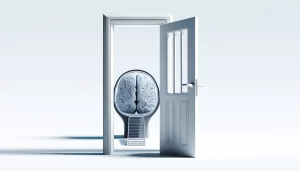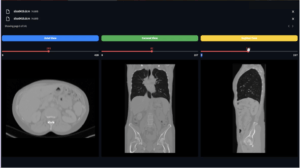Learn about medical imaging
Introduction
Artificial Intelligence (AI) has been lauded as a transformative force in many sectors, and healthcare stands as one of the most exciting fields for its application. One area of focus is the use of AI in medical imaging, where algorithms are deployed to “denoise” or clean up images, potentially leading to more precise diagnoses. However, recent studies indicate that there might be a need for careful evaluation and balance in applying these advanced technologies.
The Paradox of AI-Denoising in Medical Imaging
Researchers at Washington University in St. Louis have recently conducted an intriguing study examining the clinical utility of AI-denoised medical images. The term “denoising” refers to the process of reducing the noise (random variations of brightness or color information) in images to make them clearer.
In this study, a common deep learning (DL) tool was employed to denoise cardiac single-photon emission computed tomography (SPECT) images. While the denoising process did indeed decrease noise, it also unintentionally smoothed out the images, which led to a reduced contrast of heart defects. The reduced contrast made the defects less noticeable, which can be a potential hindrance in clinical diagnosis.
This finding challenges the assumption that AI-based denoising invariably improves the clinical utility of medical images. What might appear as an improvement in image quality from a computational perspective may not necessarily translate to better performance in real-world clinical tasks.
Evaluating AI Algorithms: The Way Forward
These revelations underscore the importance of rigorous, objective evaluations of AI algorithms in medical imaging, specifically in how they perform on clinically relevant tasks. Evaluations based solely on visual similarity or aesthetic improvements may not adequately capture the clinical utility of these AI tools.
In response to these findings, the research team at Washington University advocates for task-based assessments of AI-based denoising techniques to truly gauge their impact on clinical tasks. They are currently developing a new denoising technique to address the issues their study highlighted.
Implications for the Future of Medical Imaging
The Washington University study underscores the vital role of balanced AI application in medical imaging. It brings to the forefront the need to develop AI tools that not only improve image aesthetics but also enhance the clinical utility and relevance of these images. Ensuring that AI-based denoising is effective for real-world clinical tasks can lead to improved patient care, potentially allowing for higher quality imaging in less time and with reduced radiation doses.
As for practical application, while the article doesn’t provide a Python-based denoising example, OpenCV, a popular computer vision library, offers various denoising functions. However, it’s crucial to remember that while AI-based denoising techniques can be written with Python, the development and use of such tools for medical imaging must follow regulatory standards to ensure safety and efficacy.
In conclusion, while AI holds the potential to revolutionize medical imaging, careful attention must be paid to ensuring its applications deliver real clinical value. As we continue to explore the capabilities of AI in this domain, the goal remains clear: to harness the power of this technology in ways that improve patient care without compromising diagnostic accuracy.
Disclaimer: The application of AI in healthcare is a subject of ongoing research, and this blog post should not substitute professional medical advice.
What next?
For those interested in deepening their understanding of medical imaging, I’ve created a comprehensive Udemy course that covers everything you need to know. Lastly, to stay updated on the latest tutorials, tips, and tricks in computer vision and medical imaging, join my newsletter.
Stay curious, and happy learning!



